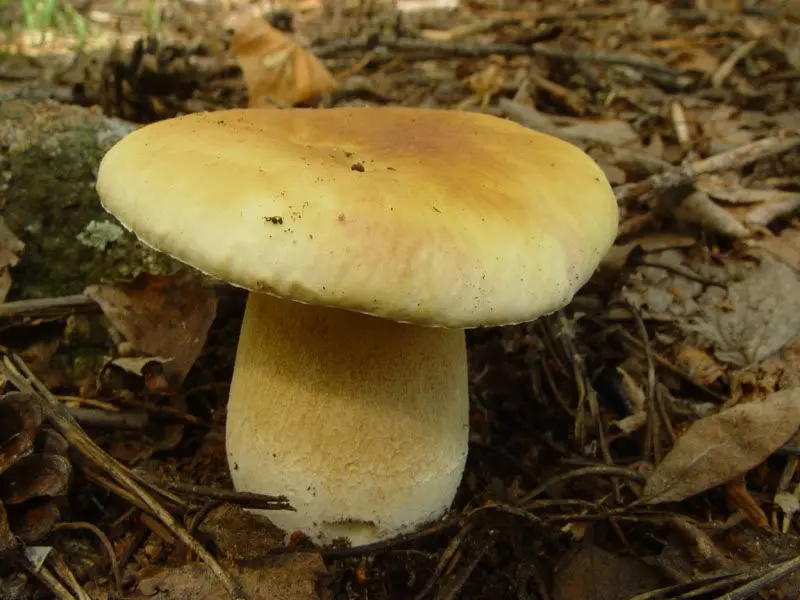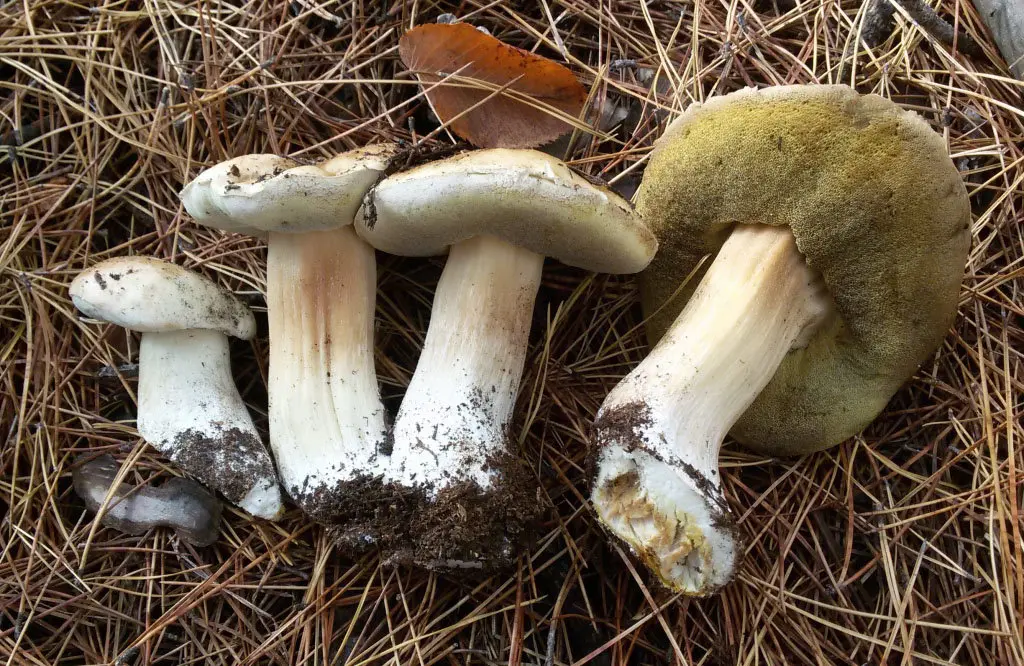White mushroom birch (Boletus betulicola)
- Division: Basidiomycota (Basidiomycetes)
- Subdivision: Agaricomycotina (Agaricomycetes)
- Class: Agaricomycetes (Agaricomycetes)
- Subclass: Agaricomycetidae (Agaricomycetes)
- Order: Boletales (Boletales)
- Family: Boletaceae (Boletaceae)
- Genus: Boletus
- Type: Boletus betulicola (Birch porcini mushroom)

white mushroom birch belongs to the genus Borovik.
This mushroom is an independent species or form of white fungus.
In some regions, he acquired a local name colossal. This was due to the fact that the first appearance of fruiting bodies coincides with the earing of rye.
Birch porcini mushroom cap reaches a diameter of 5 to 15 cm. When the mushroom is still young, its cap has a cushion shape, and then takes on a flatter appearance. The skin of the cap is smooth, sometimes also slightly wrinkled, while it is shiny, has a whitish-ocher or light yellow color. There is also this mushroom with an almost white hat.
The pulp of the porcini birch fungus white. It is dense in structure, with a pleasant mushroom smell. After cutting, the pulp does not change its color, it has no taste.
The stem of the mushroom is from 5 to 12 cm in height, and its width reaches from 2 to 4 cm. The shape of the stem is barrel-shaped, solid, whitish-brown in color. The leg of the upper part has a white mesh.
The tubular layer of young porcini birch is white, then it becomes light yellow. In appearance, it is free or can grow narrowly with a small notch. The tubes themselves are 1 to 2,5 cm long, and the pores are round and small.
As for the bedspread, there are no remains of it.
The spore powder of the fungus is brown in color, and the spores are smooth and fusiform.

A similar species to white birch is the gall fungus, which is inedible and also has bitter flesh. In gall fungus, unlike white birch fungus, the tubular layer turns pink with age, in addition, the surface of the stem has a rough mesh of a darker color compared to the main color of the stem.
white mushroom birch is an edible mushroom. Its nutritional qualities are valued in the same way as the white fungus.
This fungus forms mycorrhiza with birch, which is how it got its name.

Most often it can be found along the roads and on the edges. Most widespread birch porcini mushroom acquired in the Murmansk region, also found in Western and Eastern Siberia, the Far East, Western Europe. The fungus grows in places quite abundantly and is common, both in groups and singly.
The season for porcini birch is from June to October.









